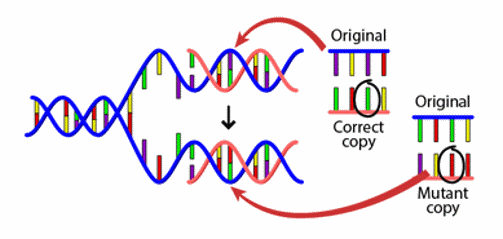
Did Neanderthals and humans interbreed? If so, does that affect our genes now?
September 23, 2011

- Related Topics:
- Population genetics,
- Genetic variation,
- Human evolution,
- Environmental influence,
- Neanderthals,
- Evolution
A curious adult from California asks:
"I read recently that Neanderthals and humans interbred and some of their genes are still in our DNA. Have these genes been shown to have any benefit? Did this interbreeding matter for the survival of our species?"
For the most part it is too early to know if Neanderthal DNA has had much of an effect on our biology. After all, Neanderthal DNA has only been known in detail for a very short time. And we've only known about interbreeding with humans for about a year.
But in that short time we have managed to find a few genes that look like they may have helped non-Africans survive. If true, they would definitely be examples of genes that affected human survival… at least in Europe, Asia and beyond.
Scientists think that interbreeding with Neanderthals may have helped humans survive Asian and European germs. Non-Africans may have inherited certain immune system genes from non-human species that would potentially have helped them deal with germs found outside of Africa. If any genes were going to be important to our traveling ancestors, these would be the ones.
See, non-human species like Neanderthals and Denisovans had thousands of years to adapt to the germs of Europe and Asia. They had evolved to survive in that environment.

Migrating Africans did not. The germs were all new to their immune systems and so most of them probably had very little resistance. Think smallpox sweeping across the Americas when Europeans arrived in 1492.
Those humans that survived best were those that were immune or at least resistant to local germs. In other words, those that had interbred with Neanderthals or Denisovans.
At least that is the current thought based on this genetic analysis. We'll definitely need many more studies to confirm this.
So far this is the only concrete data we have of nonhuman DNA helping us out. But that doesn't keep people from proposing other possibilities.
One idea I've seen is that Neanderthals and/or Denisovans transformed humans from “plodders” to “doers” by adding the 7R version of the DRD4 gene to our gene pool. Another, older idea is that red hair came from Neanderthals. There isn't a lot of data to support either of these but they are fun to think about.
These theories won't be the end of it either. People will try to explain lots of different things in light of the fact that some of our genes came from other, closely related species. It'll be interesting to see if we can get enough evidence to prove or disprove any of them.
Genes Change Slowly
Both the risk taking and the red hair arguments center on the rate that genes change. See, genes can and do change over time. That is where all the wonderful diversity around us came from.
But genes change at a very slow rate. Some argue that they change at too slow a rate to explain all of the changes that lead to red hair or risk taking.
Risk taking
One gene that has been associated with risk taking is the DRD4 gene. There are two key versions of this gene – 4R and 7R. (There is also the 2R version which behaves very similarly to the 4R one.)
People with the 7R version tend to take more risks than those with the 4R version. This gene is by no means the only one involved in that behavior, nor is every person with the 7R version a risk taker and every person with the 4R version risk averse.
The 7R version is extremely rare in Africans. In fact, it is so rare people have considered the idea that it arose after Africans left Europe. The only problem is there doesn’t seem to have been enough time for it to have just suddenly appeared.
When scientists take a close look at the DRD4 gene, they see that it took about six independent changes to get from the 4R to the 7R version. This is probably too many changes to have happened in the 50-100 thousand years since humans first left Africa.
One idea then is that it developed first in Neanderthals and then, through interbreeding, spread into the human population. One problem is that there hasn’t yet been a report on the DRD4 gene in Neanderthals. So we don’t have any proof that this is actually what happened.
Red hair
The same thing is true of red hair. Except that the problem isn’t six changes to get to a single version. No, for red hair the problem is too many versions of the MC1R gene that can cause red hair.
One of the jobs of the MC1R gene is to turn red pigment into black. When it isn't working right, you get a build up of red pigment and so red hair.

But that isn't all. Along with the red hair come freckles and fair skin too. And fair skin is bad news in Africa.
Light skin is strongly selected against in most Africans. Which is why Africans are, on average, so much darker than many Europeans and Asians.
One effect of this selection is that there are very few different versions of the MC1R gene in Africans. Basically, whenever people had a change in their MC1R gene that caused fair skin, they didn't do very well in Africa and had few kids. So most everyone there pretty much has the same MC1R gene.
Not so in Europe. There we see all sorts of changes in the gene. Some argue there are too many to have happened in the 50-100 thousand or so years since humans migrated from Africa. So where do some folks think the changes came from?
You guessed it – Neanderthals. They were in Europe for almost one million years. Since there is no selection against changes in the MC1R gene in Europe, this is plenty of time for all of these differences to have arisen.
So the idea is that humans and Neanderthals bred and red versions of the MC1R gene were introduced into the human population. These redheads did well in certain areas either because the fair skin that came with it was useful or maybe because they were so sexy that they had lots of kids or some other reason.
For now there isn't any real evidence for any of this (and in fact this theory has fallen out of favor). Scientists did find what was probably a variant of the MC1R gene that caused red hair in Neanderthals. But that particular version of the MC1R gene has never been seen in modern humans.
So we'll just have to wait and see on this one too. Once more Neanderthal DNA is looked at, then we'll be able to see if any known red hair versions of the MC1R gene are found there. If they are, then maybe red hair came from Neanderthals.

Author: Dr. D. Barry Starr
Barry served as The Tech Geneticist from 2002-2018. He founded Ask-a-Geneticist, answered thousands of questions submitted by people from all around the world, and oversaw and edited all articles published during his tenure. AAG is part of the Stanford at The Tech program, which brings Stanford scientists to The Tech to answer questions for this site, as well as to run science activities with visitors at The Tech Interactive in downtown San Jose.
 Skip Navigation
Skip Navigation
